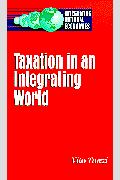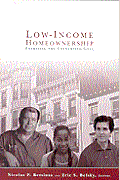Studies in this week’s Hutchins Roundup find that increasing taxes on high-income earners in California leads to out-migration, consumers don’t increase borrowing when they become unemployed and more.
Want to receive the Hutchins Roundup as an email? Sign up here to get it in your inbox every Thursday.
Taxes on high earners in California leads to more out-migration and less taxable income
In 2012, California enacted legislation that increased marginal income tax rates by 3 percentage points for high-income households (singles with income over $500,000 and couples with income over $1,000,000). Using data from the California Franchise Tax Board for all taxpayers from 2000-2015, Joshua Rauh and Ryan J. Shyu of Stanford Graduate School of Business find that high-income earners increased their rate of out-migration from California by 0.8 percentage point in response to the tax increase. Furthermore, they find that the top earners in California, whose mean income was $4.15 million in 2011, reported $522,000 less in taxable income in 2012 than similar taxpayers unaffected by the law change. Overall, they calculate that, outward migration and behavioral responses by stayers eroded 45% of the tax revenues from the increased tax rate on high-income households.
Consumers don’t increase borrowing when they become unemployed
In the event of short-term transitory income shocks such as unemployment, standard economic theory predicts that individuals will use high-interest unsecured borrowing to maintain spending. Using longitudinal data on debit and credit card transactions, account balances, and credit lines in Iceland from 2011 to 2017, Sean Hundtofte of NYU Stern Business School, Arna Olafsson of Copenhagen Business School, and Micheal Pagel of Columbia Business School find that individuals decrease their discretionary spending by about 8% when they are unemployed, but are no more likely to overdraw their accounts or increase their credit card balances. Similarly, using U.S. credit card data from 2000 to the present, they find that individuals in counties with adverse unemployment shocks do not increase overall credit card balances—even when they have unused credit available to them. Because credit demand appears to be procyclical rather than the predicted countercyclical, this may amplify fluctuations in the business cycle, the authors argue.
Business cycles are asymmetric
Stéphane Dupraz of the Banque de France and Emi Nakamura and Jón Steinsson of the University of California, Berkeley, find that business cycles do not fluctuate symmetrically around a trend, as standard economic models suggest. Instead, using evidence from the U.S. labor market, they find that cyclical contractions “pluck” economic activity downward, below the economy’s maximum, and are followed by expansions that bring the economy back up to its maximum. The authors show that this type of business cycle can be derived from a standard labor market model with downward nominal wage rigidities. They find that, under the plucking model, welfare gains from stabilization policies are substantial, reducing the average unemployment rate from 5.8% to 4.6%; in contrast, standard models find little gains from stabilization policy because contractions below trend are averaged out by expansions above trend.
Chart of the week: Productivity is falling in developed economies
 Source: Financial Times
Source: Financial Times
“I would like to see [inflation] move symmetrically around 2 percent. And in PCE and core PCE terms it still hasn’t done that. Take core PCE, which is a better indicator of future inflation than regular PCE, although regular PCE is, of course our goal. So you take core inflation, and it’s moved up and just kind of touched 2 percent, and then moved back down to well-below 2 percent in the first quarter of this year. It’s now moving back up. I guess the real question is, why do we care? It appears to be centered a few tenths below 2 percent. And the reason we care is not that two or three tenths of inflation really makes a big difference. The issue is more the broader context. We want inflation expectations to be centered right at 2 percent. We really want to hammer that point and make sure that they are, because we look around the world and we see disinflationary forces. In Japan and Western Europe, where you see inflation moving down, expectations move down, inflation moves down. And it’s been very, very hard for economies to get off that road once they’re on it,” says Jerome Powell, Chairman of the Board of Governors of the Federal Reserve System
“So we don’t want to get on that road. We don’t think we’re going to be exempt to these disinflationary pressures over time. We’ve got an aging population, as others do. I think some of the same characteristics to our economy. So for that reason, we want to keep inflation at 2 percent. And it’s not easy to explain that to the general public, who don’t really care whether inflation is 1.7 or 2 percent. But in our case, we think to serve them better we need to anchor inflation at 2 percent so that it doesn’t begin that inexorable slide down.”
The Brookings Institution is committed to quality, independence, and impact.
We are supported by a diverse array of funders. In line with our values and policies, each Brookings publication represents the sole views of its author(s).











Commentary
Hutchins Roundup: Taxing high earners, borrowing when unemployed, and more
October 10, 2019